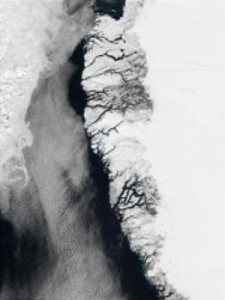Have you ever thought how Earth came to be as it is today? As far as scientists are concerned, Earth is very very very ancient.
From the time of its origin to present days, Earth has undergone continous modification. Continents have been flooded by vast seas. They also have ponderously drifted across the face of the globe and slowly collided with other landmasses to form lofty mountain ranges. Massive glaciers have buried vast tracts of forest and prairie.
Earth’s spectacular history deserves to be closely examined, for it permits us to see the future. We expect that many phenonmena of the past will happen again such as volcanic eruptions that caused great forests fires, unexpected earthquake that shook a whole city from peacful lives, and tsunami that washed and flooded a city of milions of people just to name a few
Radiometric dating data from various sampled rocks found on Earth and on other meteorites and planets pushed the history of the Earth as far back as roughly 4.56 billion Years ago. Earth formed around 4.54 billion (4.54×109) years ago by accretion from the solar nebula. Volcanic out gassing likely created the primordial atmosphere, but it contained almost no oxygen and would have been toxic to humans and most modern life. Much of the Earth was molten because of extreme volcanism and frequent collisions with other bodies.

Image of southwest Greenland. (Credit: Jacques Descloitres, MODIS Land Rapid Response Team, courtesy of NASA Visible Earth)
Scientists still have much to learn about the volcanism that shaped our archaic planet’s early history. Recently, new evidence from a team led by Frances Jenner of Carnegie Institution for Science demonstrates that some of the tectonic processes driving volcanic activity, such as those occurring today, has a history as early as 3.8 billion years ago. This groundbreaking work is published in Geology.
Upwelling of Earth’s mantle at mid-ocean ridges, as well as the eruption of new magmas on the seafloor, drive the continual tectonic activity of the oceanic crusts. As the oceanic crust drifts away from the mid-ocean ridges and cools it becomes denser than the underlying mantle. Over time the majority of this oceanic crust sinks back into the mantle, which can trigger more volcanic eruptions. This process is known scientifically as subduction and it takes places at plate boundaries.
Because volcanic eruptions that are triggered by subduction of oceanic crust are chemically different from those erupting at mid-ocean ridges and oceanic island chains, these differences between the chemistry of magmas generated at each of these tectonic environment provide “geochemical fingerprints” that can be used to try to identify the categories of tectonic activity dominated early in Earth’s history
New fossil sites and trace fossils are being discovered all the time – in part because it is getting easier to access remote areas of the planets… Sometimes as a result of new exposures being made accessible below retreating ice at the pole or even your backyard would be a place for new fossils.
As new discoveries are being made everyday, scientists are prepared to accept new and changing ideas regarding the evolution of the Earth System including the dynamic classrooms of SCIE 300 and their directed studies.


